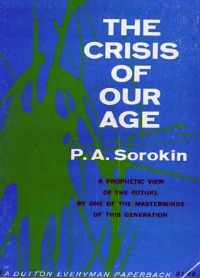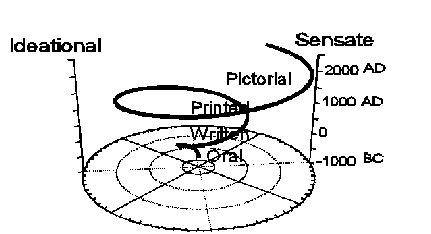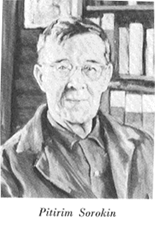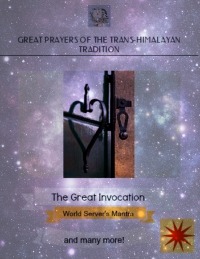
Dear Reader,
I want to apologize to you for having missed an issue or two. It was unintended. My husband was suddenly hospitalized. It was a very intense time. I had to honor my commitment to him made many years ago. I know you understand and I am grateful.
Rebecca
PERSPECTIVE ON THE PRESENT GLOBAL CRISIS
An article in several parts
by Rebecca A Field
All of nature constantly tries to get our attention and wake us up.
Have you noticed the intensity and universality of problems the world faces right now?
There is urgency about the time that behooves us to take a deeper look so that we can consciously enroll in doing our part to bring about constructive change.
 Many years ago (1941) a book by Pitirim Sorokin entitled, The Crisis of Our Age*, had a profound effect on me. Sorokin was a Russian émigré and a brilliant sociologist. He initiated the Department of Sociology at Harvard.
Many years ago (1941) a book by Pitirim Sorokin entitled, The Crisis of Our Age*, had a profound effect on me. Sorokin was a Russian émigré and a brilliant sociologist. He initiated the Department of Sociology at Harvard.
It is the kind of book that leaves a mark on the mind and causes people to think and find a meaningful order in the world.
It also erects three pillars of social development that describe three different kinds of culture humankind has initiated, developed, and lived in until the culture disintegrated.
Looking back, it is a cyclic series of major human events and can help us see what could be ahead.
According to Sorokin, Western culture, and to a great extent the rest of the world, is in a crisis that is discernible in “art, science, philosophy and religion, law and morals, manners and mores, in the forms of social, political, and economic organization, including the nature of the family and marriage….”
During the last almost 500 years there has been a disintegration of the sensate value system in Western culture. His study revealed that as one form of cultural expression declines another begins to take shape.

CULTURE TYPES
He found that three types of culture have existed in Africa, Asia, the Middle East and Europe. Cultures are huge and have very recognizable markers. Sorokin called the three types of cultural patterns, the idealistic, the ideational and the sensate.

During each of these periods all phases of human life expressed one major value. For example, the most significant cultural manifestations during the Middle Ages were God, religion and the sacred. In this cultural expression, what people understood as truth was “revealed by the grace of God.”1 Sorokin called this Ideational truth.
The opposite of ideational truth he called sensate. We receive—perceive–sensory reality through our senses. The senses become the arbiters of truth for all phases of our lives: literary, legal, political, economic, health, educational artistic etc.
 The third kind of cultural expression Sorokin found was idealistic truth, a combination of the two opposites: sensory and ideational or sacred truth. Sensory reality finds a balance with sacred reality.
The third kind of cultural expression Sorokin found was idealistic truth, a combination of the two opposites: sensory and ideational or sacred truth. Sensory reality finds a balance with sacred reality.
Looking down the long and dusty halls of the past, it is evident that ideational or sacred truth and sensate truth are irreconcilable.
For example, in a sensory cultural phase, “cold snow” would be an expression of God and in a sensate period, “cold snow” is something to frolic in, to enjoy, to have fun with. Somewhere in the middle is the balance, the third tower that serves as a bridge to the future.
That is what we have to find!
Humanity is currently in a period of realizing that the sensory cultural outlook of the present isn’t working any longer.
We’ll look more carefully at this in the next issue.
1. Sorokin, Pitirim, The Crisis of Our Age, E.P. Dutton & Co., Inc., New York, 1941, p. 81..












